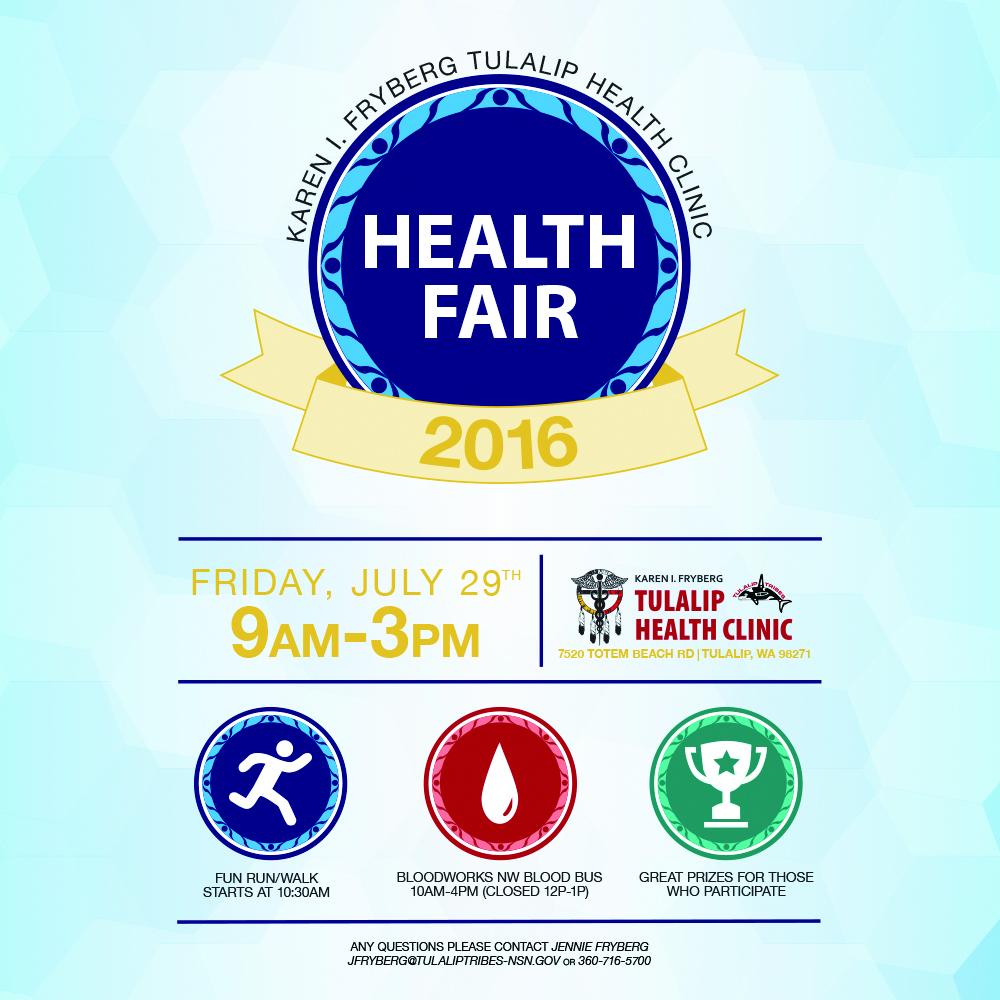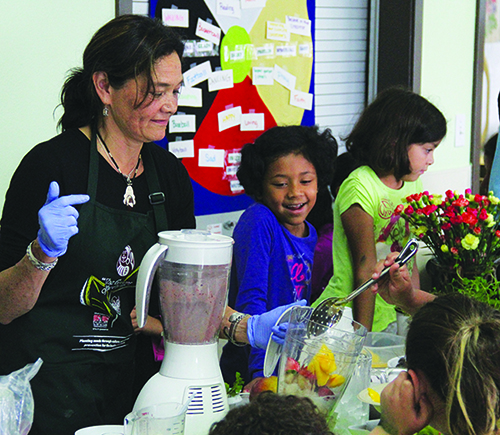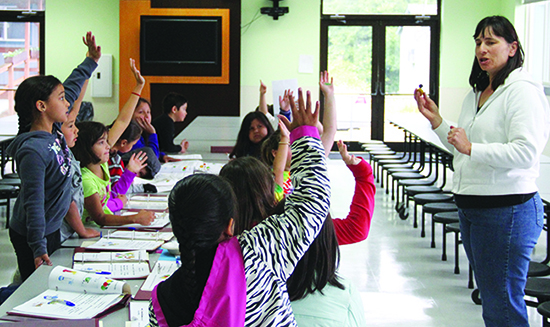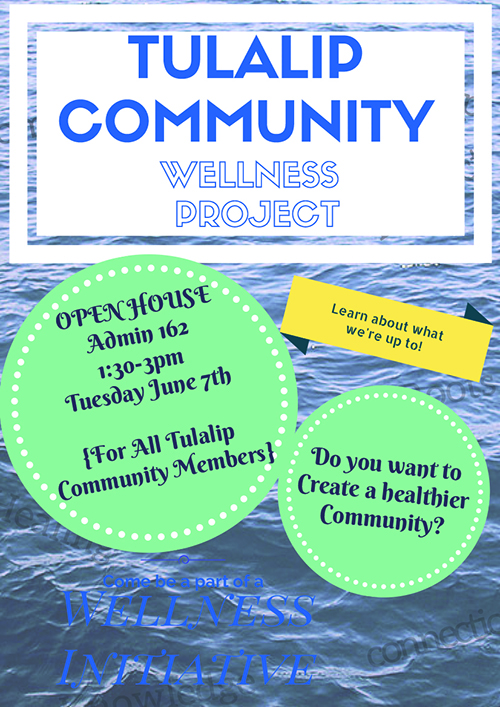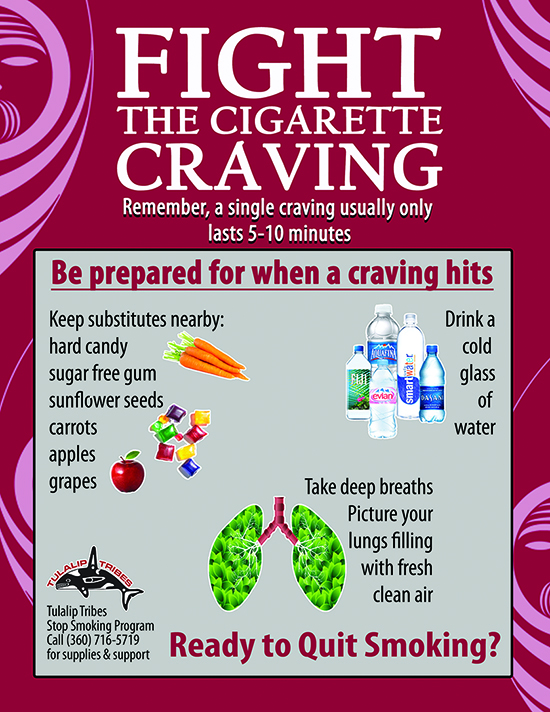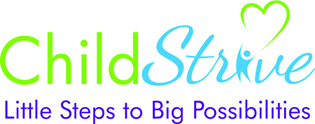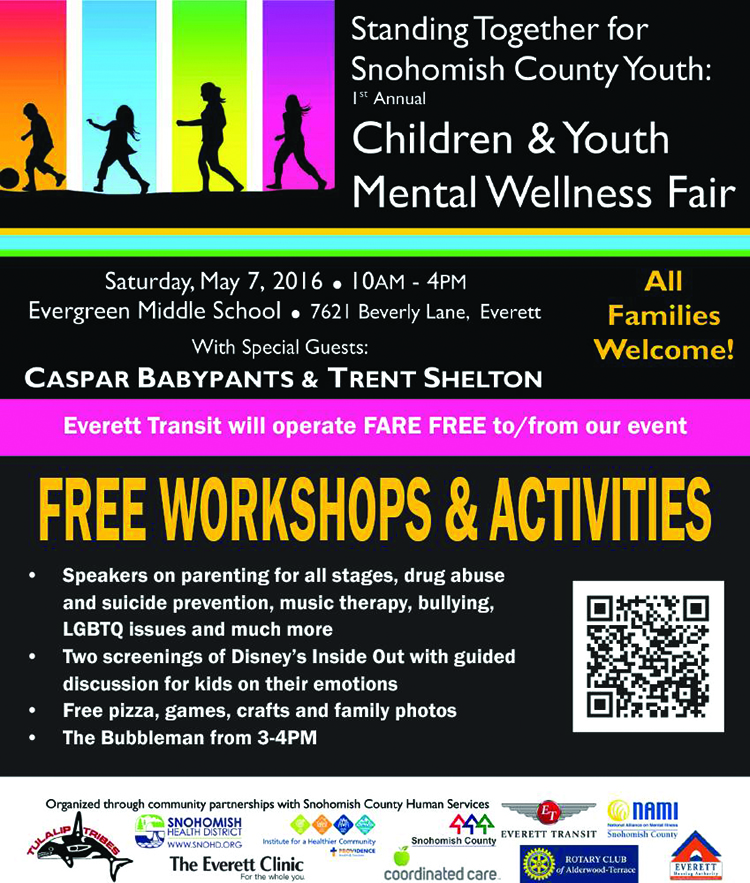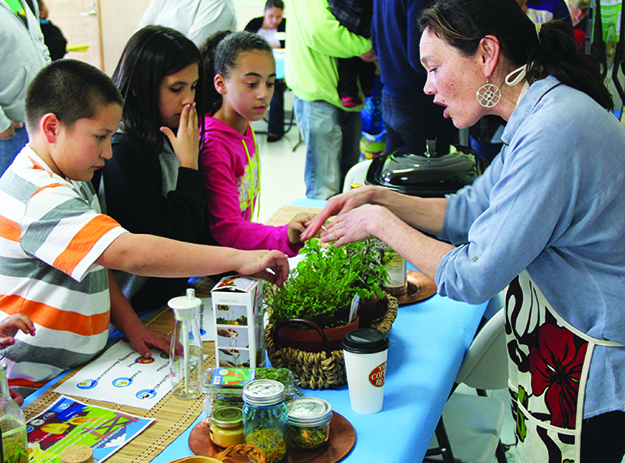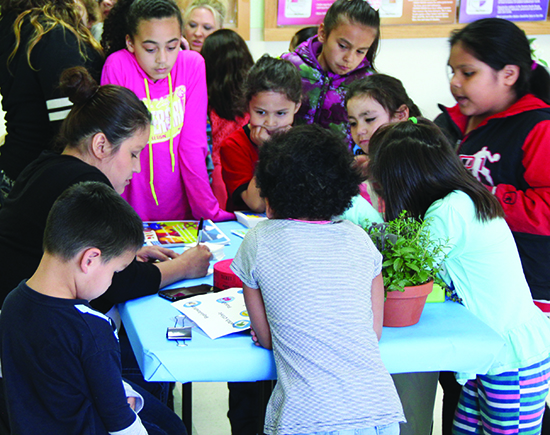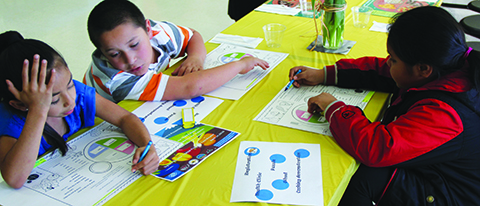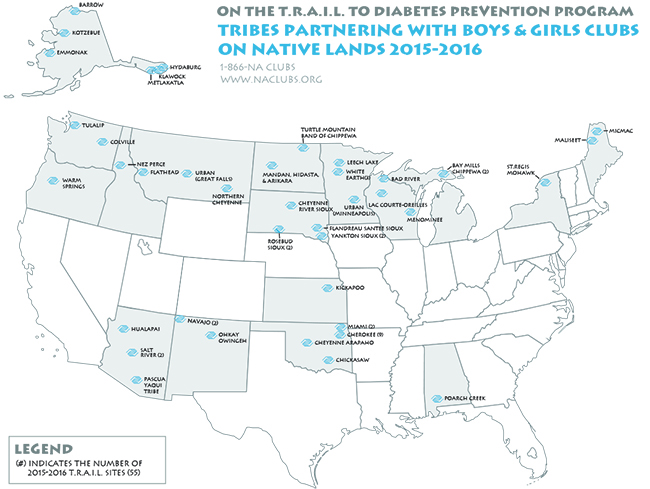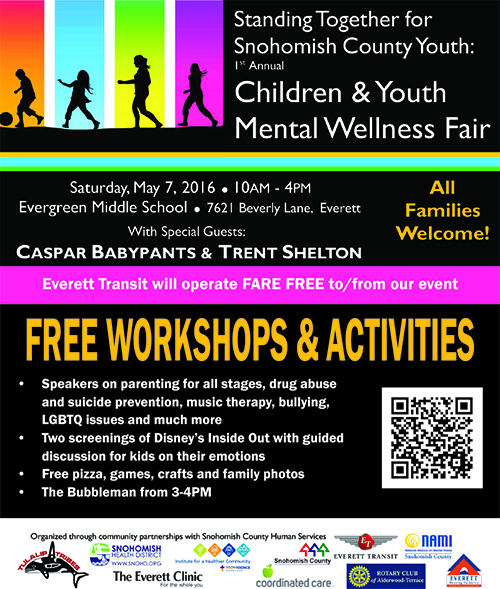Category: Health
Exercise class offered at health clinic
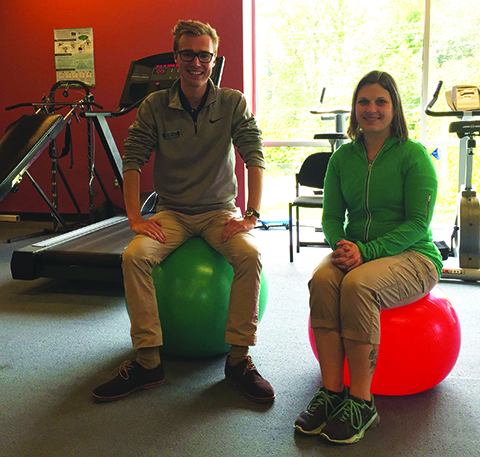
By Veronica Leahy, Karen I Fryberg Tulalip Health Clinic
Have you heard of the exercise class we offer at the Tulalip Health Clinic? Our class leaders are Kendall McCauley, Athletic Trainer, and Stephen Coombs, CSCS from Summit Rehabilitation.
Kendall has been in practice for over 11 years and has spent the last seven working for Summit Rahab. She graduated in 2004 from Barry University in Florida then came back to her roots in the Pacific Northwest. Her personal interests include baseball, exploring the outdoors, crafting, spending time with her children and riding motorcycles.
Stephen has been working in the PT field for over four years. He is a Certified Strength and Conditioning Specialist (CSCS) and a USA Track and Field Level-1 Coach. His personal interests include running, hiking and camping. Stephen is also interested in furthering his career in PT and will be applying to physical therapy schools this summer.
We all know how important it is to stay active and we know how great we feel after exercising, but at times it’s hard to motivate ourselves. Sometimes we lose sight of what’s most important, our health.
Tulalip Health Clinic has teamed up with Summit Rehabilitation to provide a place where patients can learn to exercise to improve strength, endurance, speed and power. Our ultimate goal is to help create healthier lifestyles and further independent living. We do that by using body weight movement and a variety of exercise equipment ranging from free weights to rowing and treadmill machines. When the weather permits, we’ll get outside for some fresh air and take a stroll along the newly built walking trail. We will also be offering some new group activities such as chair yoga on the lawn.
If you’re ready to use what you have and do what you can, contact your doctor to request an authorization for exercise.
Our summer hours are Tuesdays and Fridays 8:00-11:00 a.m.
Summertime smoothies with Tulalip kids
By Kalvin Valdillez, Tulalip News
Tulalip Health Clinic Diabetes Care and Prevention held a cooking class at the Boys & Girls Club on Friday June 24, 2016. The class, held for children attending TRAILS diabetes prevention program, focused on food safety. Students received work packets containing information about germs and bacteria, cleanliness, kitchen etiquette, safety, and food temperature.
After washing their hands thoroughly, the students were ready for the cooking demonstration. With a table full of fruit and vegetables, the instructor informed the class that they would be making smoothies. The first round of smoothies went to members of the Wisdom Warrior Elders, who were enjoying watching the kids learn about food safety.
“Having our Wisdom Warrior elders present was a vital part of this day. Our elders were there to pray and participate with the kids. They loved watching them interact with the food, the recipes they were creating, and sharing their smoothies with [the students],” stated Veronica ‘Roni’ Leahy, Tulalip Health Clinic Diabetes Care and Prevention Program Coordinator.
Veronica explained that the students in the cooking class are currently developing their own cookbooks. Program staff hopes these books serve as both a reminder of the importance of healthy choices as well as the fun and memories that were created during these classes at the Boys & Girls Club.
The excitement and eagerness to learn were qualities all of the students possessed that afternoon. Each student was respectful, listened intently, and followed instructions perfectly during class.
Veronica stated, “Teaching the children at the Boys and Girls Club about food safety was an important part of the lesson plan for the day. We would like to say thank you to Karen Knopp, Food Safety Inspector, for developing a lesson plan targeted at the age of our kids in the TRAILS Program. Hearing the kids questions and seeing them respond to the food after the teaching was really special because they were truly listening and applying what they learned while they made their own smoothies. I would also like to say thank you to Klesick Family Farms, they offer outstanding service and beautiful fruits and vegetables. We teach how to use the foods and we order enough boxes of food for the kids to take home for their families to enjoy.”
Summer Berry Smoothie
Makes 2 servings
- 1/2 cup frozen strawberries
- 1/4 cup frozen wild blueberries
- 1/2 frozen banana
- 1 fresh ripe banana
- 1/2 cup fresh strawberries
- 1 cup vanilla soymilk
- 1 Tbsp maple syrup
- 1/2 cup coconut water ice cubes
Nutrition:
This smoothie is rich in manganese, vitamin C, and B12 from the fortified soymilk. It is also a good source of fiber and potassium. You can add a scoop protein powder to give it and extra boost protein. Add some flax seeds, chia seeds or flax oil to give it a boost of healthy omega fatty acids.
Directions
- Add the soymilk, frozen fruit, maple syrup, cider vinegar, ice and sea salt to blender. Blend until chunky-smooth
- Add in the fresh banana. Blend until smooth
- Lastly, add in the fresh strawberries and pulse blend for a few more rounds – you don’t want to mush up the berries though
Serve: Garnish with fresh fruit and enjoy!
Tulalip Community Wellness Project Open House, June 7
Public Health Alert: Hand Foot and Mouth Disease (HFMD) in Tulalip
Thank you for your attention and for caring for your community.
Quit Smoking, Fight Cravings With Help From Tulalip’s Health Clinic
Climate Change and Health: What Everyone Needs to Know, May 14
Children & Youth Mental Wellness Fair, May 7
If you spend any time out in public, you are sure to encounter at least one small child having a huge melt down of emotion. Some parents feel confused by what is happening for their children in those moments. What is really going on?
Children experience the same emotions as adults do. Unfortunately, their brains do not yet have the capability to keep those emotions under control or “regulated”. Emotion regulation is a very complex function in the brain and requires being able to identify what we are feeling, what happened to make us feel that way, and what we can do to bring ourselves back to calm.
Out of all the important life skills parents teach their children, none may be more important than the skill of learning to manage emotions. This is a skill that supports “school readiness” beyond any skill in reading or writing. It is also a skill that research suggests can help reduce the onset of some mental health symptoms.
So you may be asking yourself, “How do adults teach this skill to a child?” Research has shown that when an upset child is in the presence of a calm adult who is trying to understand what the child is feeling, children will be able to use the adult’s sense of calm to help themselves get calm. Think back to a time when you were overwhelmed with a powerful emotion. If someone near you was meeting the same intensity of emotion as yourself, you may have found it difficult to get calm. Children have the same experience! Only when a child gets to a calm state can they take in information and “learn” from a situation.
In honor of the National Children’s Mental Health Awareness week find out more information on a variety of topics that support children’s mental health by attending the “Youth Mental Wellness Fair” happening on May 7th from 10-4 at Evergreen Middle School in Everett.
ChildStrive (formerly known as Little Red School House) has been partnering with Tulalip families for more than 30 years. For information about your child’s childhood development contact Courtney Miller at ChildStrive at (425) 353-5656 x7145 or Courtney.Miller@ChildStrive.org. More information about ChildStrive can be found on our website at www.ChildStrive.org
On the T.R.A.I.L. to diabetes prevention
by Micheal Rios, Tulalip News
On the evening of Thursday, April 14, Tulalip Boys & Girls Club held an open registration for its very own T.R.A.I.L. healthy choices program. Its mission? To teach children the necessary steps to prevent diabetes and pre-diabetes.
“We are super excited to offer the community a very special hands-on practical prevention program for the kids at the Boys & Girls Club,” stated Veronica “Roni” Leahy, Tulalip Diabetes Care and Prevention Program Coordinator. “This is the first time a large scale collaboration between health clinic staff and the Trails Program staff has occurred. Together, we are offering diabetes prevention education delivered in a cooking class format with nutrition education geared towards kids!”
From 1990 to 2009 the incidence of type 2 diabetes in Native American/Alaska Native youth increased by 110%, according to the Indian Health Service (IHS). Type 2 diabetes has been reported in Native American youth as young as four years of age, and IHS also reports that mortality rates for diabetes are 1.6 times higher for Native Americans compared to the U.S. general population.*
In 2003, the National Congress of American Indians (NCAI), IHS, Boys & Girls Clubs of America (BGCA), and Nike, Inc., initiated a prevention program aimed at reducing the onset of type 2 diabetes among Native youth. The program – On the T.R.A.I.L. (Together Raising Awareness for Indian Life) to Diabetes Prevention – is an innovative combination of physical, educational, and nutritional activities.
T.R.A.I.L. is a 12 chapter program that provides youth with a comprehensive understanding of healthy lifestyles in order to prevent type 2 diabetes. The program is presented with four themes: About Me, My Health, & Being Part of a Team; Healthy Eating; Making Smart Food Choices and My Healthy Community.
Woven throughout the program are self-esteem and prevention activities utilized by BGCA, including contributions from national evidence-based programs such as SMART Moves. Club members draw from Native traditions and history to learn about nutrition, food choices, media influences and the impact of type 2 diabetes.
The program also emphasizes the importance of teamwork and community service. Participants apply decision-making and goal setting skills in the physical activity challenges, and engage in service projects to improve healthy lifestyles in their communities. Community and family members participate in activities with the elementary-aged club members. These motivate members to achieve their goals and promote physical activity. The club sites are implementing the SPARK Physical Education and Nike Let Me Play programs to foster club-wide participation in fun physical activities and games for 60 minutes every day.
T.R.A.I.L. is currently funded at 55 participating club sites located in 18 states. Each of the Native Boys & Girls Club sites received the following to implement the T.R.A.I.L. program:
- A grant to fund program operations, including a part-time staff person and program training for one year.
- Evaluated program curriculum, training, and on-going technical assistance.
- Access to the SPARK Afterschool Physical Activity Program.
Each club member who registered to participate in the T.R.A.I.L. program received a box of fresh food from Klesick Farms and Haggen Grocery store, and their choice of an apple tree or blueberry bush. These boxes were valued at approximately $50.00 per box.
“The kids will learn how to grow, harvest and preserve fruit, berries & vegetables and we will use them in the meals we prepare together. Plus, they will personalize and develop their own cookbooks with the recipes,” added Roni. “Our collaborative prevention team looks forward to working with your kids and sharing our knowledge and skills with them.”
The T.R.A.I.L. program will hold sessions Wednesdays and Thursdays from 5:00 p.m. – 6:00 p.m. and Fridays from 3:00 p.m. – 4:00 p.m. in the Boys & Girls Club community room.
*source: https://www.naclubs.org
Contact Micheal Rios, mrios@tulaliptribes-nsn.gov

